Tamron 17-70 mm f/2.8 Di III-A VC RXD
3. Build quality and image stabilization
Keeping the aperture of the Tamron in mind, you won't be especially surprised that physically it is the heaviest and the biggest lens in this group. What's interesting, its filter thread is hardly the biggest, and also its minimum focusing distance sticks out in a positive way.
In the photo below the Tamron 17-70 mm f/2.8 Di III-A VC RXD is positioned next to the Olympus M.Zuiko 12–40 mm f/2.8, also a very universal instrument, with a fixed f/2.8 aperture.
Please Support UsIf you enjoy our reviews and articles, and you want us to continue our work please, support our website by donating through PayPal. The funds are going to be used for paying our editorial team, renting servers, and equipping our testing studio; only that way we will be able to continue providing you interesting content for free. |
- - - - - - - - - - - - - - - - - - - - - - - - - - - - - - - - - - - - - - - - - - - - - - - -
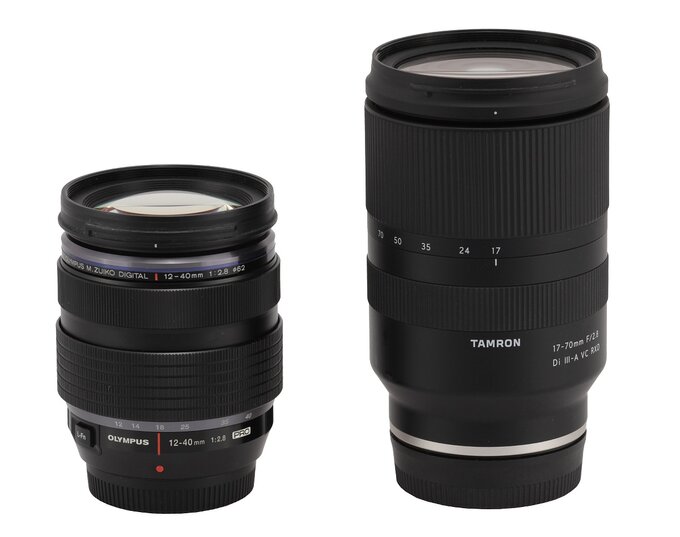 |
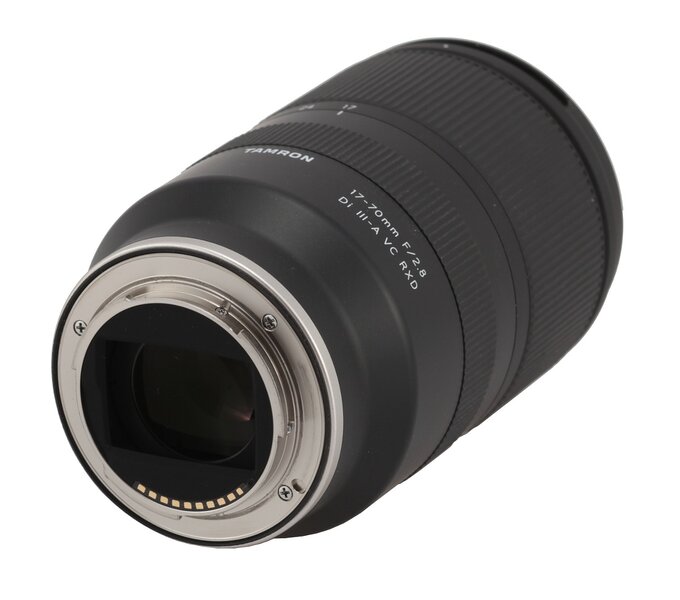 |
The next part is a manlual focus ring, 13 mm wide, completely covered by ribs. It comes without any distance and/or depth of field scale. The ring, a focus-by-wire construction, moves very smoothly and is properly damped. Even if you turn it faster the focus throw amounts to an angle of over 180 degree ensuring great precision of your settings.
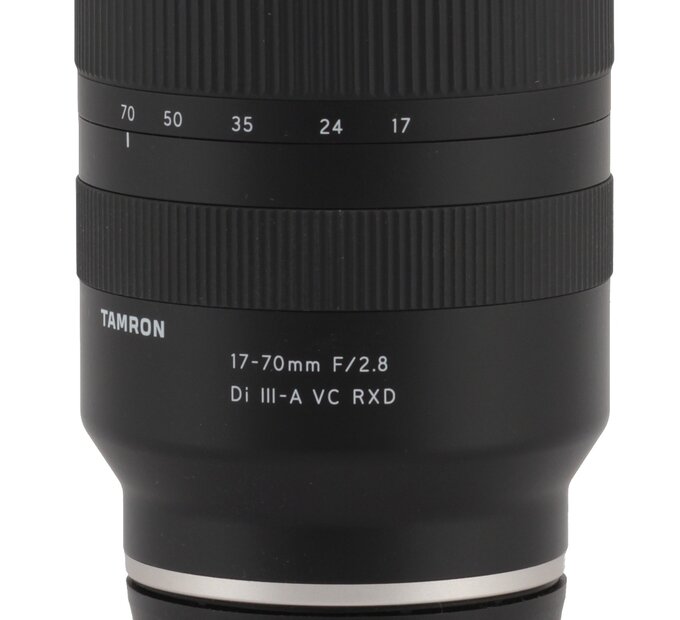 |
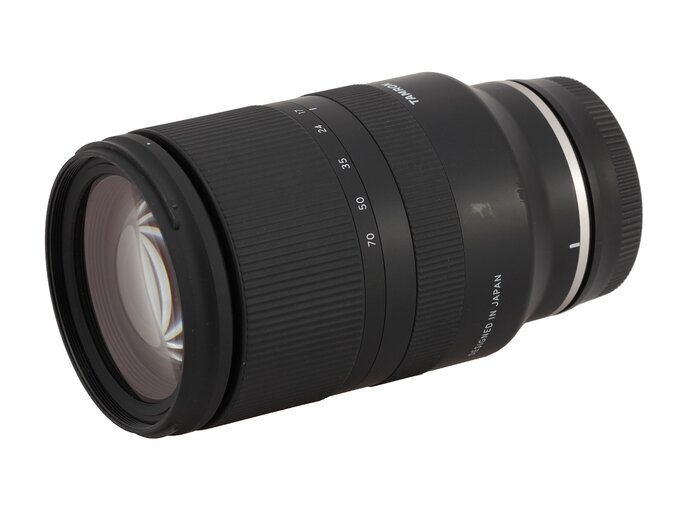 |
The front element is 56 mm in diameter, surrounded by a non-rotating filter thread, 67 mm in diameter, and a hood mount.
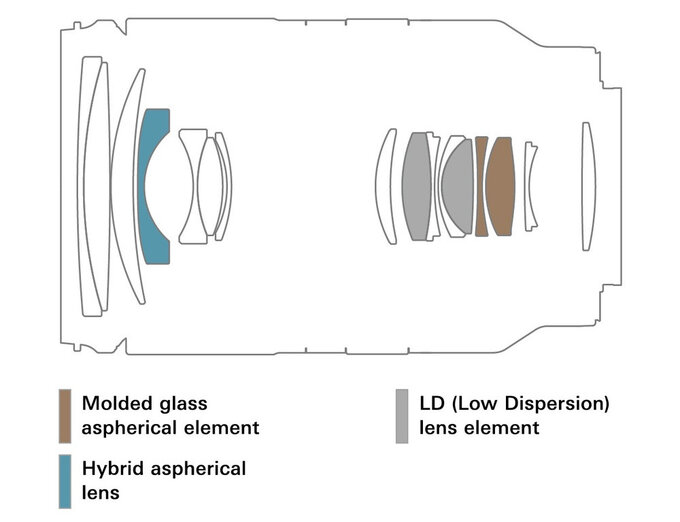 |
Buyers get in the box with the lens: both caps, and a petal-type hood.
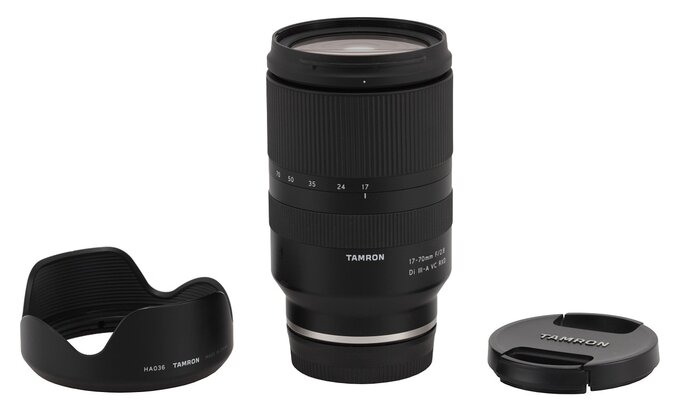 |
Image stabilization
In order to check the efficiency of vibration reduction system of the Tamron 17-70 mm we took several dozen photos at the 70 mm focal length with shutter speeds ranging from 1/125 to 1/2 of a second with the stabilization switched on and off. Then we calculated the percentage of blurred photos at every speed and presented the results as an exposure time function graph, expressed in EV (with 0 EV being the equivalent of 1/100 of a second).
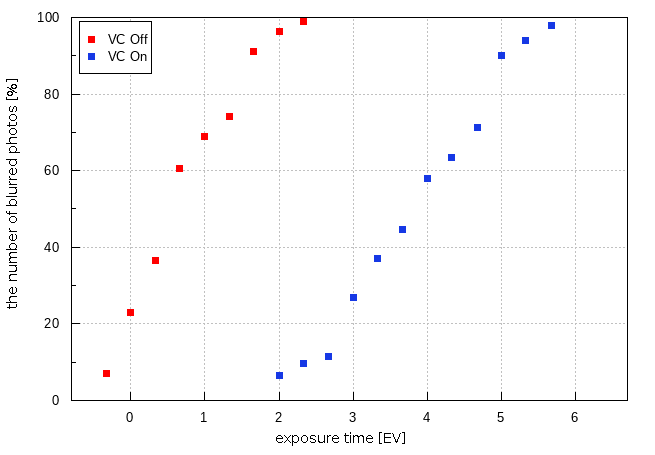
The maximum distance between both curves reaches about 3.7 EV and such is, in our opinion, the efficiency of the stabilization system, featured by the tested lens. Taking into account the fact that the majority of producers declare an efficiency of about 4 EV in this class of equipment and usually that efficiency is not higher than 3.7-4.3 EV, te result reached by the Tamron should be called very sensible and we think the VC mechanism of this lens works properly well.






